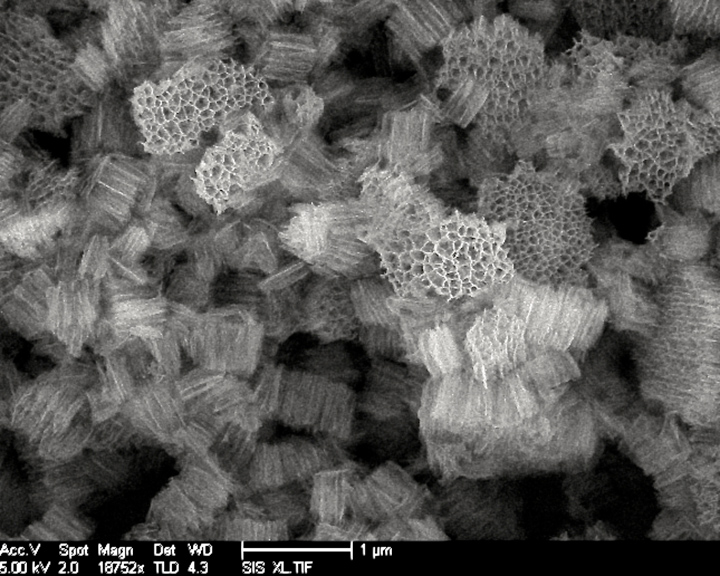DARPA Awards $6 Million to Develop Nanotech Therapies for Traumatic Brain Injuries
By:
- Susan Brown
Published Date
By:
- Susan Brown
Share This:
Article Content
DARPA, the U.S. Defense Advanced Research Projects Agency, has awarded $6 million to a team of researchers to develop nanotechnology therapies for the treatment of traumatic brain injury and associated infections.
Led by Professor Michael J. Sailor, Ph.D., from the University of California San Diego, the award brings together a multi-disciplinary team of renowned experts in laboratory research, translational investigation and clinical medicine, including Erkki Ruoslahti, M.D., Ph.D. of Sanford-Burnham Medical Research Institute, Sangeeta N. Bhatia, M.D., Ph.D. of Massachusetts Institute of Technology and Clark C. Chen, M.D., Ph.D. of UC San Diego School of Medicine.
Ballistics injuries that penetrate the skull have amounted to 18 percent of battlefield wounds sustained by men and women who served in the campaigns in Iraq and Afghanistan, according to the most recent estimate from the Joint Theater Trauma Registry, a compilation of data collected during Operation Iraqi Freedom and Operation Enduring Freedom.
“A major contributor to the mortality associated with a penetrating brain injury is the elevated risk of intracranial infection,” said Chen, a neurosurgeon with UC San Diego Health System, noting that projectiles drive contaminated foreign materials into neural tissue.
Under normal conditions, the brain is protected from infection by a physiological system called the blood-brain barrier. “Unfortunately, those same natural defense mechanisms make it difficult to get antibiotics to the brain once an infection has taken hold,” said Chen, associate professor and vice-chair of research in the Division of Neurosurgery at UC San Diego School of Medicine.
DARPA hopes to meet these challenges with nanotechnology. The agency awarded this grant under its In Vivo Nanoplatforms for Therapeutics program to construct nanoparticles that can find and treat infections and other damage associated with traumatic brain injuries.
“Our approach is focused on porous nanoparticles that contain highly effective therapeutics on the inside and targeting molecules on the outside,” said Sailor, the UC San Diego materials chemist who leads the team. “When injected into the blood stream, we have found that these silicon-based particles can target certain tissues very effectively.”
Several types of nanoparticles have already been approved for clinical use in patients, but none for treatment of trauma or diseases in the brain. This is due in part to the inability of nanoparticle formulations to cross the blood-brain barrier and reach their intended targets.

These nanoparticles of porous silicon, each 100 times smaller than a human hair, contain microscopic reservoirs that can hold and protect sensitive drugs. The surface of the particles can be covered with targeting molecules. Image credit: Chia-Chen Wu, UC San Diego.
“Poor penetration into tissues limits the application of nanoparticles to the treatment of many types of diseases,” said Ruoslahti, distinguished professor at Sanford-Burnham and partner in the research. “We are trying to overcome this limitation using targeting molecules that activate tissue-specific transport pathways to deliver nanoparticles.”
Ruoslahti’s team has already developed peptide-based biomolecules that can specifically target tissues such as brain tumors, atherosclerotic plaques and blood clots in the heart. Now they have set their sights on infections of the brain.
Treating brain infections is becoming more difficult as drug-resistant strains of viruses and bacteria have emerged. Because drug-resistant strains mutate and evolve rapidly, researchers must constantly adjust their approach to treatment.
In an attempt to hit this moving target, the team is making their systems modular, so they can be reconfigured “on-the-fly” with the latest therapeutic advances.
Nanocomplexes that contain genetic material known as short interfering RNA, or siRNA, developed by Bhatia’s research group at MIT, will be key to this aspect of the team’s approach.
“The function of this type of RNA is that it specifically intereferes with processes in a diseased cell. The advantage of RNA therapies are that they can be quickly and easily modified when a new disease target emerges,” said Bhatia, a bioengineering professor at MIT and partner in the research.
But effective delivery of siRNA-based therapeutics in the body has proven to be a challenge because the negative charge and chemical structure of naked siRNA makes it very unstable in the body and it has difficulty crossing into diseased cells. To solve these problems, Bhatia has developed nanoparticles that form a protective coating around siRNA.
“The nanocomplexes we are developing shield the negative charge of RNA and protect it from nucleases that would normally destroy it. Adding Erkki’s tissue homing and cell-penetrating peptides allows the nanocomplex to transport deep into tissue and enter the diseased cells,” she said.
Bhatia has previously used the cell-penetrating nanocomplex to deliver siRNA to a tumor cell and shut down its protein production machinery. Although her group’s effort has focused on cancer, the team is now going after two other hard-to-treat cell types: drug-resistant bacteria and inflammatory cells in the brain.
“The work proposed by this multi-disciplinary team should provide new tools to mitigate the debilitating effects of penetrating brain injuries and offer our warfighters the best chance of meaningful recovery,” Chen said.
Team leader Sailor adds, “The DARPA funding agency often uses the term ‘DARPA-hard’ to refer to problems that are extremely tough to solve. What makes this a DARPA-hard problem is the fact that it is so difficult to deliver therapeutics to the brain. This is an underserved area of research.”
Share This:
You May Also Like
Stay in the Know
Keep up with all the latest from UC San Diego. Subscribe to the newsletter today.



